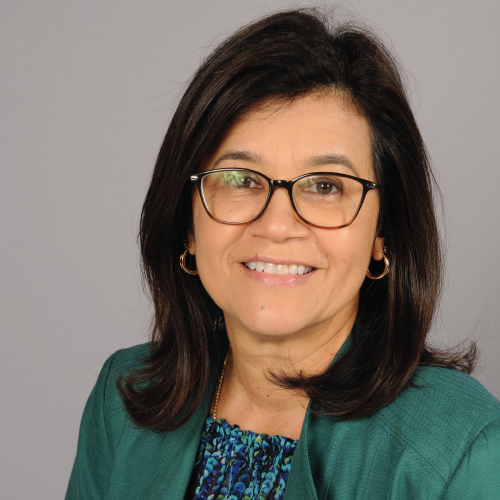Guest Post: Making the Most of Your Summer Fun(ds)— Planning Summer Learning that Works for Educators
December 12, 2023
This is a guest post from AASA 2023-24 president, Gladys Cruz.
As we head into the long holiday break, let’s take some time to reflect, relax, and recharge—this is especially important for teachers, administrators, and support staff alike. Like winter break, summer vacation also brings great benefits for educators’ wellbeing. At the same time, extra time for learning over the summer is essential to helping students catch up, particularly after COVID-19 learning disruptions. Summer learning can offer both academic and non-academic enrichment advantages that can impact the way a student shows up the next school year– benefits that educators welcome.
So, how can we achieve both goals: rejuvenation for educators AND more time for learning?
To make summer learning work for everyone, district leaders should thoughtfully plan—and clearly communicate—a reasonable scope of work, flexible schedules, and appealing incentives that give educators the time, resources, and support to restore and renew their passion for teaching over the summer. For example, in its National Summer Learning Project study of large-scale summer programs in six districts, RAND found that teachers participating in summer programs liked having access to new curriculum materials, teaching small classes, teaching only one subject, having supportive site leaders and coaches, and working a half day. Read on to learn more about how to plan a scope, schedule, and incentives that encourage all staff to join the summer team:
1. Plan a reasonable scope of work
- If there isn't already a high-quality district summer curriculum to use, RAND recommends anchoring your program in a commercially available curriculum and then tapping district curriculum experts (not individual teachers) to develop or adapt unit and lesson plans for the summer. Commit to providing summer staff with fully prepared lessons and materials.
- Offer educators paid planning and practice time before the summer program begins to ease their minds and set them up for success.
- Plan for smaller class sizes in the summer to allow for more small-group and individual instruction.
- Determine what professional development needs to be done in person, and what can be done asynchronously.
- When possible, repurpose existing school-year meetings for summer professional development.
- Communicate all time commitments and required meetings during summer hiring.
2. Consider various schedules
- Survey or interview interested teachers to surface their preferences for summer professional development and program schedules. Some teachers may want to move straight from the school year into summer learning, while others may want a short break before beginning the summer program. Districts may also consider holding the summer program toward the end of the summer as a “jumpstart” to the new school year or as a way of strengthening students’ transitions between key grades.
- Use staffing models that allow you to offer half-day or half-session teaching positions to widen your staffing pool. You might partner with a youth development nonprofit or local college to provide complementary half-day staffing and/or pair academic teachers to split a full six-week session into two three-week stints.
3. Develop an appealing package of incentives for summertime educators
- Consider offering child care for the children of teachers, administrators, and support staff during the summer program.
- Aim for a higher hourly or daily pay rate for teachers during summer learning to recognize the additional work. Consider one-time bonuses. (Note that these strategies might be particularly good fits for districts projected to still have some non-recurring ESSER funds next summer that must be obligated by September 30, 2024).
- Work with teachers to identify their professional growth goals, and commit to offering new leadership and professional learning opportunities during the summer.
- Consider piloting new technology or tools in the summer to give participating teachers a head start and time to learn and adjust for the upcoming school year.
- Tap into teachers’ passions and expertise and empower them to develop exciting enrichment programming.
- Plan for teacher perks during the summer like breakfast, a snack cart, staff-only lunches, raffles, and other benefits.
- Incorporate time for team building and fun into pre-program professional development.
ACTION ITEM: Explore Staff Budget Scenarios
January is a great time to gather input from prospective summer staff on their preferences and goals and examine the budget implications of various staffing scenarios and pay rates. This information can then be added to the data you already gathered earlier in the year on your summer 2023 program. Staffing will be the biggest cost driver of your program, and RAND recommends having an approved budget by the end of January. Once the staffing plan and incentives are finalized, you can begin staff recruitment in February.
To begin to track revenue and expenses, use the Summer Budget Tool found in the Summer Learning Toolkit and linked below.
Tool - Summer Budget: Adaptable tool pre-populated with common revenue and expense line items.
This blog is part of a Summer Program Planning series that draws from evidence-based practices culled from RAND research commissioned by The Wallace Foundation. Each suggestion is accompanied by concrete resources from the online Summer Learning Toolkit to provide just-in-time support throughout the school year for your district’s summer learning team. (Check out the May, June, July, August, October and November blog posts for more summer advice.)
For more, share Eight Key Summer Learning Practices for Elementary School Districts with your summer leadership team.

